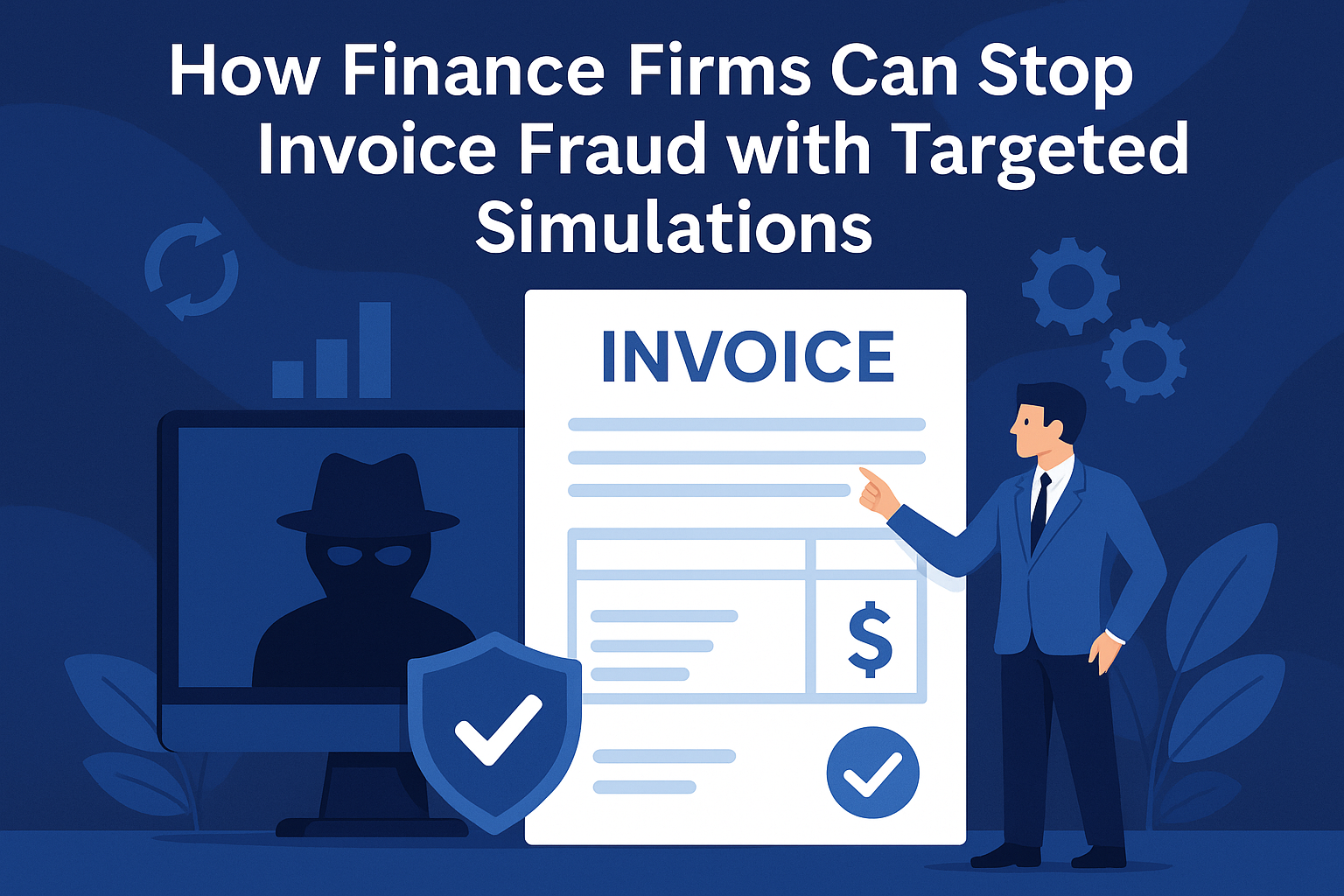Technology
[5 Options] Remove Write Protection From USB Drive
How to Remove Write Protection From USB Drive on Windows 11/10 [Updated]
“My USB drive has suddenly changed to write-protected mode. I am buzzed by this sudden move as I’ve got some important files to edit. Any help to remove write protection from USB drive will be of great help. Thanks!”
—A Question from Quora
You’re in a hurry to move files from your USB drive. But lo and behold it has suddenly changed to write-protected and has barred you from transferring them. However, there’s no need to panic as we’ll go over how to disable write protection on USB drive with 5 options in this post. So you can regain access to your files. Besides, we’ll also give you a tip to safely recover files from a write-protected USB.
Part 1: Why Does My USB Keep Getting Write-Protected?
A write-protected USB drive means, you can view or read its files but can’t save, edit, or delete them. However, you must know why this issue happens before you learn how to disable write protection on USB drive. This will help you know which situation demands which solution:
- Physical Write Protection Switch – Some USB drives have a small switch, which when switched on can make them write protected.
- Insufficient Space – If your USB drive is full, it might act as if it’s write-protected.
- File Permissions – Certain files or folders may be set to read-only permissions.
- Disk Attributes – The USB drive itself might be set to read-only.
- Virus or Malware – A virus can corrupt USB drive, causing write protection.
- Hardware Issues – Your USB drive might be physically damaged.
Part 2: Recover Data After Formatting Write-Protected USB Flash Drive
The solutions mentioned below for how to remove write protection from thumb drive might require you to format your USB. As you already know you cannot copy or move files from a write-protected disk, therefore, you can only retrieve them after formatting.
However, you can’t do this manually except by using a third-party free data recovery tool. Tenorshare 4DDiG is one such powerful program to reclaim files from various internal/external storage devices whether they’re formatted, deleted, corrupted, hidden, lost, or virus-stricken. Here’s what you must know about this tool:
- Can recover data from write-protected and BitLocker-encrypted USB drives, SD cards, SSDs, HDDs, and much more.
- Can reclaim 2000+ file formats including MS Office files, videos, images, archives, audio, and much more.
- Can recover files lost due to various data loss use cases such as crashed systems, bad sectors, missing partitions, and so forth.
- Offers a user-friendly interface, regular updates, and free technical support.
- Provides a free preview for recovered data and allows you to reclaim only specific files.
Follow instructions below to reclaim data from a write-protected USB drive with aid of this tool:
Step 1: Stick your write-protected USB drive into your computer. Then, install data recovery tool on same PC. Run it and choose your write-protected external drive from device’s list. Hit “Start.”
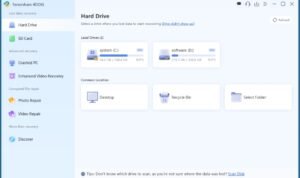
Oplus_131072
Step 2: You can pick between a Quick or Deep scan and preview files for free during scan beneath “File View” and “Tree View” categories.
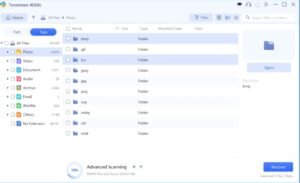
Oplus_131072
Step 3: Stop scan once you find your target files. Hit “Recover” to export them to a safe place on your computer.
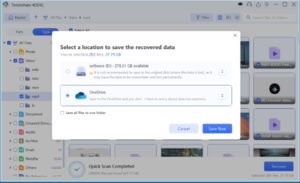
Oplus_131072
Part 3: How to Remove Write Protection From USB Drive? (5 Fixes)
Here’s how to disable write protection on USB drive with 5 options. However, not all of them will work in all conditions. So, you’ll have to pick a method that best suits your situation of these 5 solutions. Here they are:
Option A: Turn Off Physical Write Protection Switch
Before finding out how to remove write protection from thumb drive on your computer, first, check for a physical switch. Some USB drives have a small switch labeled “Lock” or “Write Protection,” usually on their sides. If you find one, switch it off, reinsert your pen drive, and try to transfer your data again. However, If there’s no switch, you’ll need to utilize other methods to remove write protection from USB drive.
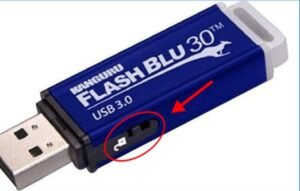
Oplus_131072
Option B: Use Diskpart to Remove Write Protection From USB
Diskpart is a command-line tool in Windows used for managing disks. It can remove write protection from USB on Windows 11/10 by clearing its “read-only” attribute. This allows operating system to write to your USB again. Here’s how to unlock write protected pen drive with Diskpart:
Step 1: Check and jot down storage capacity of your USB drive from File Explorer. Then, stick USB into your computer.
Step 2: Hit “Win + R,” keys together. This will open Run box. After this, input “cmd.” Hit Enter.”
Step 3: Then, input following commands. Hit “Enter” after each one:
- “Diskpart.”
- “list disk.” This will display all storage drives including your USB. So, locate it in list by matching its capacity and jot down its disk number.
-
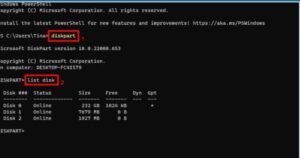
Oplus_131072
- “select disk *.” (Here replace “*” with your USB’s drive letter).
- “Attributes disk clear readonly.” This will clear away write protection from your USB’s attributes.
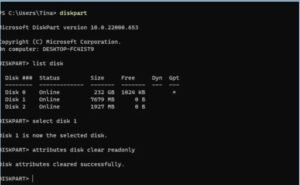
Oplus_131072
Step 4: Type “Exit.” Then, hit “Enter” to close window. Restart your computer and try writing to your USB again.
Option C: Edit Registry to Remove Write Protection From USB
A specific registry key controls write protection status of a pen drive drive. Changing its value on Windows 10 can remove write protection from USB. However, editing registry is a delicate process that can cause system problems or data loss. So, it’s important to back up your system first. Here’s how to unlock write protected pen drive by editing registry key in Registry Editor:
Step 1: Stick USB drive into your computer. Input “regedit” in search bar on Windows Desktop.

Oplus_131072
Step 2: Open “Registry Editor.” After this, click chevron icon next to “HKEY_LOCAL_MACHINE.” Expand it. Do same for “SYSTEM” and “CurrentControlSet.”
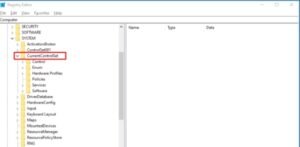
Oplus_131072
Step 3: Then, expand “Control” folder. If StorageDevicePolicies is missing, create it with following instructions:
- Right-click “Control.” Select “New,” then “Key.”
- Name new key as “StorageDevicePolicies.”
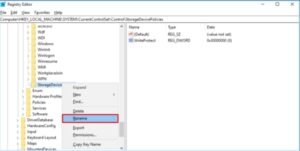
Oplus_131072
Step 4: Right-click “StorageDevicePolicies.” Pick “New,” then tap “DWORD (32-bit) Value.” Name it “WriteProtect.”
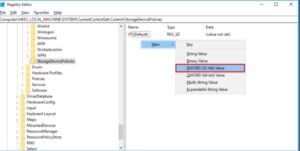
Oplus_131072
Step 5: Double-click “WriteProtect.” After this, set “Value Data” to “0.” Change “Base” to “Hexadecimal.” Hit “OK.”
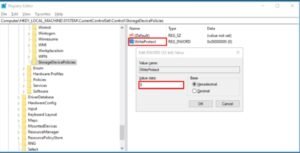
Oplus_131072
Step 6: Close Registry Editor. Restart your computer, and inspect if USB drive is writable again.
Option D: Change Pen Drive Read-Write Properties
Sometimes, your USB drive properties might be set to “read-only” permission. This will block any changes. Thus, to remove write protection from USB Windows 11/10, you’ll need to modify its properties. Here’s how to unlock write protected pen drive by altering its read-write permissions:
Step 1: Stick your USB drive into your computer. Then, open “File Explorer.”
Step 2: Right-click your USB drive. Next, select its “Properties.”
Step 3: Tap “Security” tab. Then, click “Edit” to change permissions.
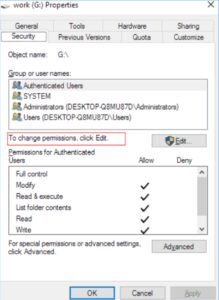
Oplus_131072
Step 4: In “Security” tab, tick “Allow” boxes for permissions like “Full Control,” “Modify,” “Read,” and “Write” to switch off read-only.
Step 5: Un-tick “Deny” boxes if they are selected. Click “Apply.” Hit “OK.”
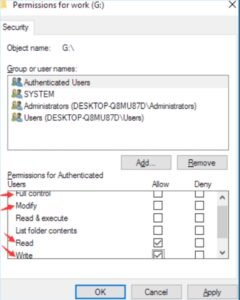
Oplus_131072
Option E: Utilize Third Party Formatter
If you’ve tried everything to remove write protection from USB Windows 11/10 and it’s still write-protected, it might be due to a corrupted file system. In this case, you’re left with no alternative except to format it to fix corruption. An advanced formatting tool like Rufus can not only format your USB drive, but also create bootable drives, and flash BIOS or other firmware. Here’s how to unlock write protected pen drive with Rufus:
Step 1: Download Rufus from rufus.ie, pick a version that matches your system, then, install and run it on your computer.
Step 2: Stick your write-protected USB drive into your computer. Rufus should detect your pen drive automatically. If not, choose it from “Device” drop-down menu.
Step 3: In “Boot selection” menu, pick ISO file you want.
Step 4: Beneath “File system,” select “FAT32” from drop-down. Hit “START” to format your write-protected USB drive.
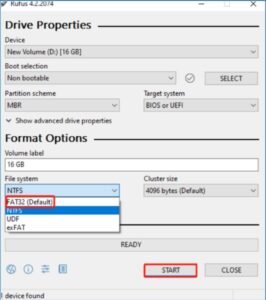
Oplus_131072
FAQs About How to Remove Write Protection From USB Drive on Windows 11/10
Q1: Is it possible to remove write protection from USB?
Yes, on Windows 11/Windows 10, you can remove write protection from USB through a physical switch usually present on side of drive.
Q2: How do I remove write protection from a USB without a switch?
If there’s no physical switch on your USB drive use Diskpart on Windows 10 to remove write protection from USB by disabling its read-only attribute. You can also edit registry to change its write-protection status or alter your USB drive’s properties if they’re set to “read-only.”
Conclusion
A write-protected USB drive blocks your access to altering files. However, you can remove write protection from USB drive based on your tech skills. We recommend checking for a physical switch, using Diskpart, editing Registry (be careful with this!), and changing file permissions.
As a last option, you can format your USB drive to remove its write-protected status but this will delete all your data. If you don’t have a backup, use 4DDiG Data Recovery to retrieve files from write-protected drives after formatting. It offers a free preview of recovered data and enables you to choose specific files to reclaim.
-

 Tech1 year ago
Tech1 year agoHow to Use a Temporary Number for WhatsApp
-

 Business2 years ago
Business2 years agoSepatuindonesia.com | Best Online Store in Indonesia
-

 Social Media1 year ago
Social Media1 year agoThe Best Methods to Download TikTok Videos Using SnapTik
-

 Technology1 year ago
Technology1 year agoTop High Paying Affiliate Programs
-

 Tech10 months ago
Tech10 months agoUnderstanding thejavasea.me Leaks Aio-TLP: A Comprehensive Guide
-

 FOOD12 months ago
FOOD12 months agoHow to Identify Pure Desi Ghee? Ultimate Guidelines for Purchasing Authentic Ghee Online
-

 Instagram3 years ago
Instagram3 years agoFree Instagram Auto Follower Without Login
-

 Instagram3 years ago
Instagram3 years agoFree Instagram Follower Without Login


















